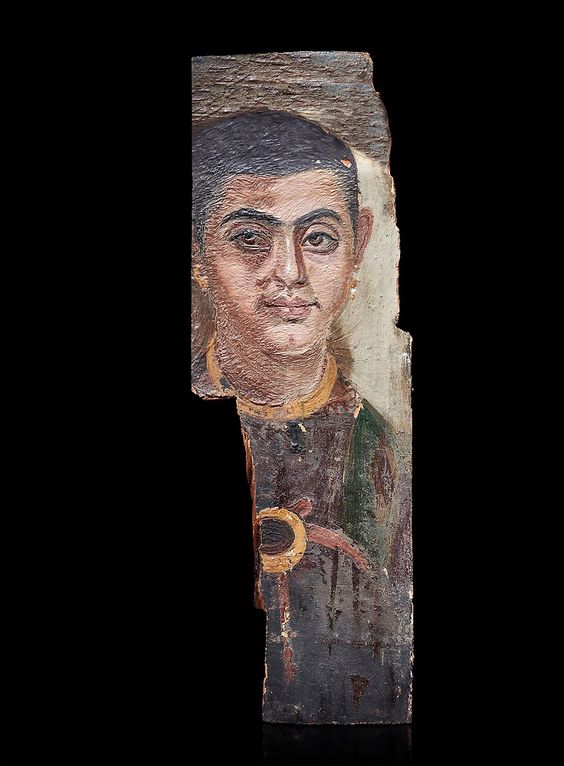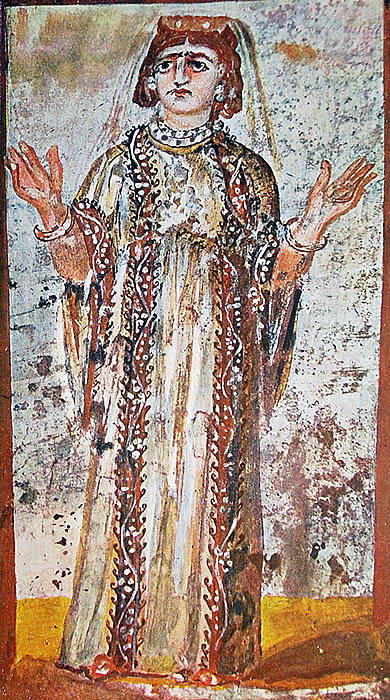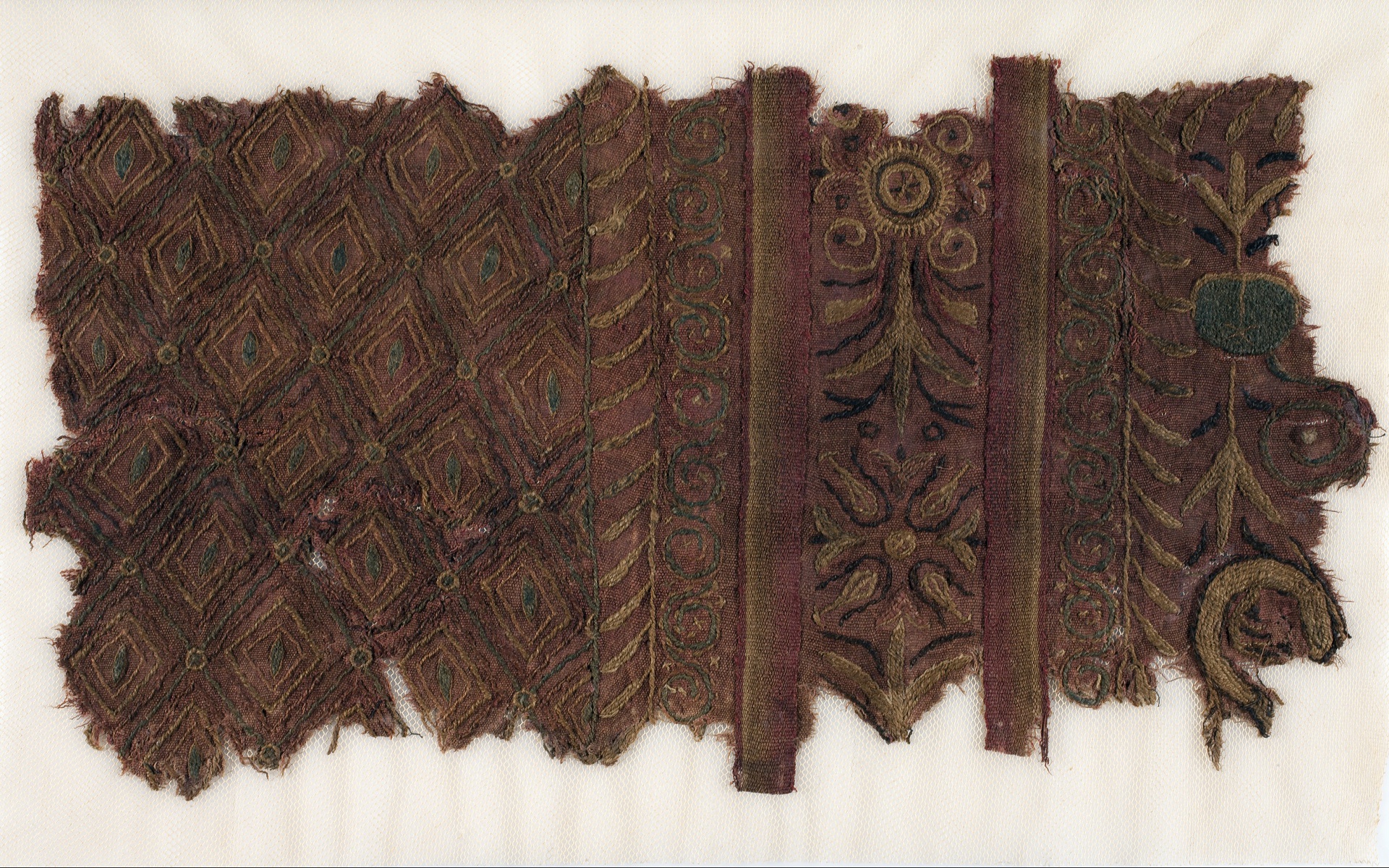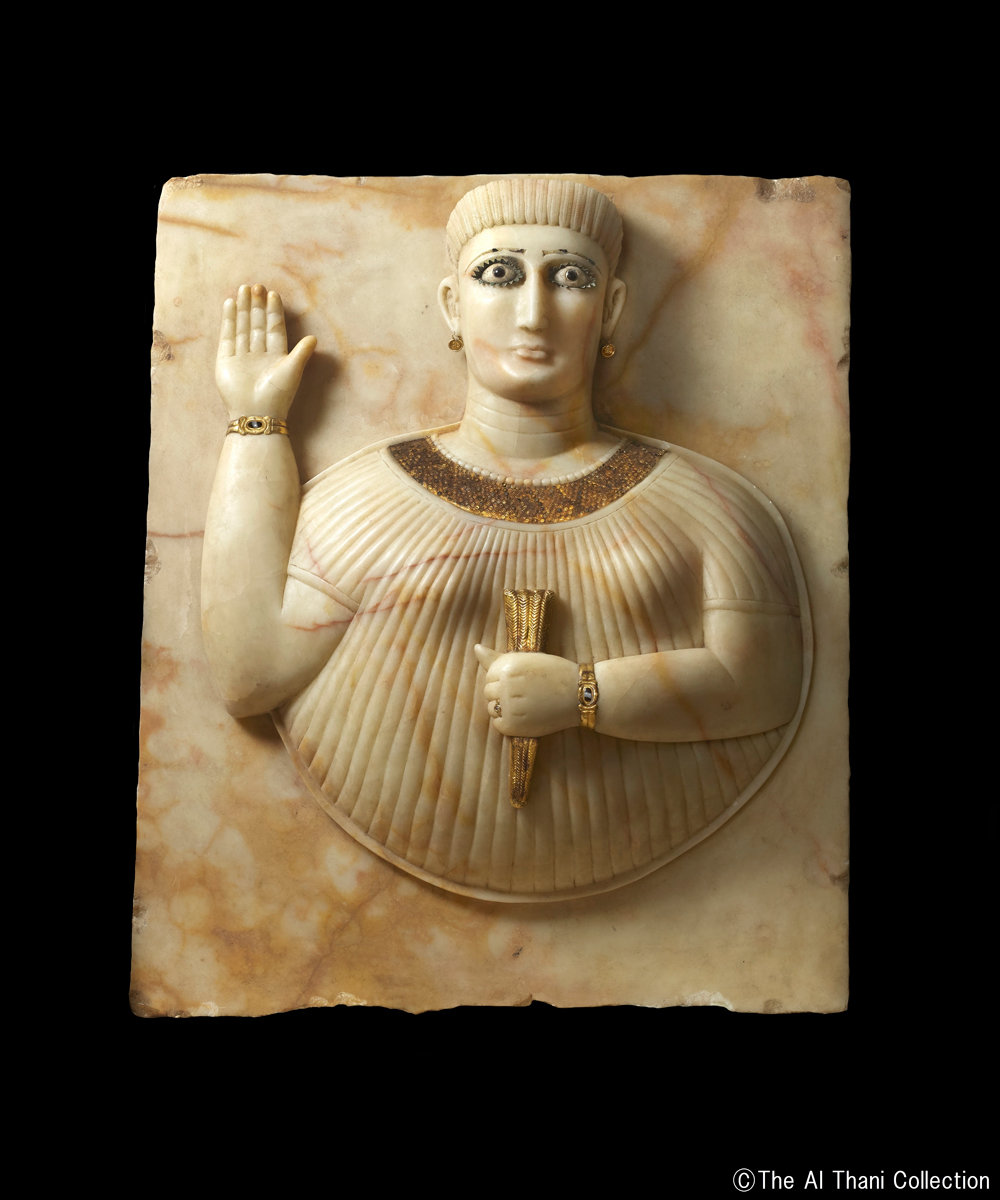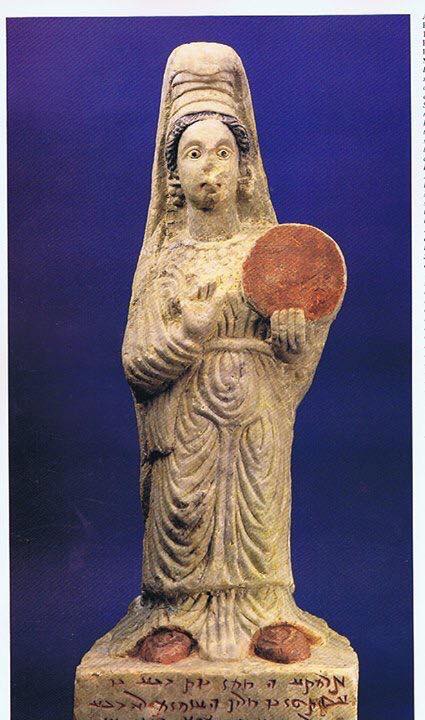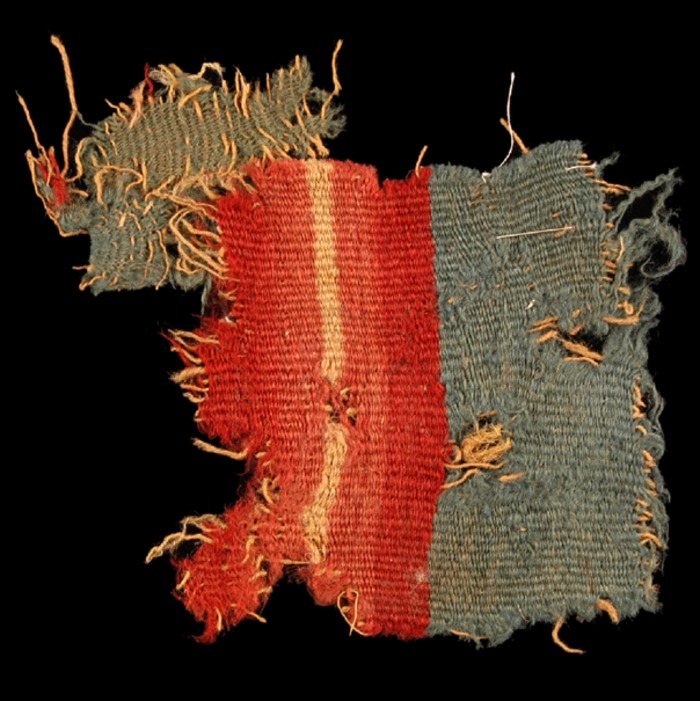
Etruscan antefix, 400-380 BCE 
Necklace, Western Greek, Sardinia, 300-200 BCE 
Beautiful Etruscan antefix dated to 4th century BCE with very well preserved traces of polychrome. Relief depicts a maenad wearing a decorative headband (fillet), a veil, and a necklace similar to the one from Sardinia. Necklace is dated to 3rd century BCE, is made of gold with garnet cabochons.
Picture of a sculpture http://historictrends.weebly.com/costume-blog/the-etruscans#
Picture of a sculpture from Museo Nazionale Etrusco di Villa Giulia, Rome https://commons.wikimedia.org/wiki/File:Antefisse_a_testa_di_menade_e_sileno_con_nimbo_a_conchiglia_4,_terracotta,_falerii,_santuario_di_vignale_sacro_ad_apollo_soranus,_400-380_ac_ca.jpg
Necklace from the British Museum https://www.britishmuseum.org/collection/object/G_1872-0604-665-666

Votive bust of a woman, mold-made terracotta from the Tomb of the Votive Heads. “This is a more generic terracotta type that shows a woman with idealized features adorned with heavy jewelry and an elaborate hairstyle that eloquently speak of status. This particular terracotta type is characteristic of Cerveteri and has not been documented elsewhere.”
The Etruscans and the Mediterranean: The City of Cerveteri https://journals.openedition.org/acost/468

Antefix with female head, c. 400 BCE, Classical, terracotta. Ny Carlsberg Glyptotek.

Sarcophagus of Larthia Seianti, Etruscan, 150-130 BCE
Her bracelet has the same pattern as “chains” on Palmyra reliefs.
Full description >> http://colorsandstones.eu/produkt/sarcophagus-of-larthia-seianti-etruscan-150-130-bce/

